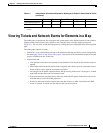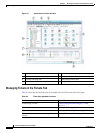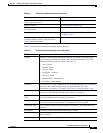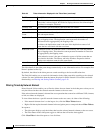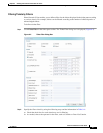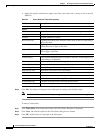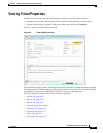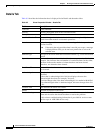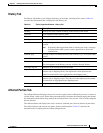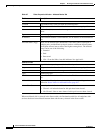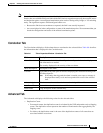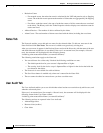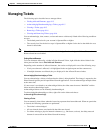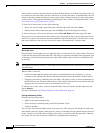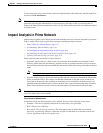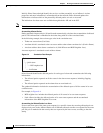
9-11
Cisco Prime Network 4.0 User Guide
OL-29343-01
Chapter 9 Working with Tickets in Prime Network Vision
Viewing Ticket Properties
History Tab
The History tab enables you to display the history of the ticket, including all the events. Table 9-6
describes the information that is displayed in the History tab.
Affected Parties Tab
The Affected Parties tab displays the service resources (pairs) that are affected by an event, an alarm, or
a ticket. When a fault occurs, Prime Network automatically calculates the affected parties and embeds
this information in the ticket along with all the correlated faults. You can view a list of all the endpoints
that are affected.
The Affected Parties tab displays the service resources (affected pairs) that are affected by the ticket.
The Affected Parties tab contains two tables: Source and Destination. Table 9-7 describes the
information that is displayed in the Affected Properties tab.
Table 9-6 Ticket Properties Window - History Tab
Field Description
Severity Severity bell icon, colored according to the severity of the alarm.
Event ID Event identifier of the specific alarm.
Time Date and time the event was received by the Event Collector.
Description Description of the event.
Location Entity that triggered the alarm, as a hyperlink that opens the relevant
location.
Note If the entity that triggered the alarm is outside your scope, a message
is displayed that states you do not have permission to access the
selected item.
Element Type The type of device on which the root event occurred, e.g., Cisco Nexus 5020
Switch
Alarm ID Alarm identifier.
Ticket ID Ticket identifier.
This field appears in the History tab only in Prime Network Events.
Causing Event ID Identifier of the causing event for the ticket.
Duplication Count For network events, the duplication count is calculated by the VNE and
pertains only to flapping events. The duplication count represents the
number of noncleared events aggregated by the flapping event.
Reduction Count For network events, the reduction count is calculated by the VNE and
pertains only to flapping events. The reduction count represents the number
of events that are aggregated by the flapping event.
Detail panel Long description of the selected event.



